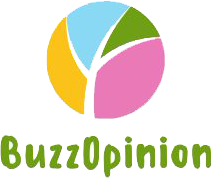5 Sports Marketing Trends That You Should Know
The digital era expects everything from those in charge of marketing in sports organizations. An individual is unlikely to be completely familiar with all aspects of sports marketing. Check out an overview of the top ten sports marketing trends, complete with exciting examples. Take a look at them down below.
1. Over the top (OTT) content
OTT offers include Netflix, Amazon Prime, and Facebook. OTT is an abbreviation for “over the top,” which means that the content can be accessed regardless of the end device.
What is this got to do with sports? Platforms such as Facebook and Amazon have been known for decades to turn the sports rights market on its head. In India, for example, the Primera Division, Spain’s top professional football league, is only available on Facebook. Twitter’s short message service also infringes on sports rights. “Anyone who wanted to watch football ahead of time turned on the television,” Daniel Macaulay explains. “You can now watch live sports from anywhere, on any device.”
Streaming options benefit older niche sports as well. “Facebook got the World Surf League rights and is paying $30 million for two years,” Macaulay explained. Surfing is ideal for the digital target audience. Traditional media companies are facing competition from the internet. “They build profiles of their users so they know exactly who sees their content and when — and can then display targeted ads,” Macaulay says of the platforms.
This database elevates sports marketing to new heights.
2. AI
AI is an abbreviation for Artificial Intelligence. The world is changing, and there is no doubt that AI will play a role. However, three things are required: data, data, and data (and of course a fast internet connection).
For sports marketing, chatbots are an exciting form of artificial intelligence. “FC Arsenal has partnered with GameOn specialists to develop a chatbot called Robot Pires, which communicates with fans via Facebook Messenger, Skype, Slack, Kik, and Telegram,” says marketing expert Daniel Macaulay. It’s also a lot of fun. Robot Pires, named after Arsenal legend Robert Pires, provides users with humorous and simple Premier League club scores, stats, news, and videos.
Using chatbots in sports marketing has numerous benefits:
– By delivering amazing content, a fun and intelligent chatbot can reach new audiences and strengthen fan loyalty.
– The company or sports club positions itself as a forward-thinking innovator, strengthening its brand in the B2B segment.
– Chatbots collect information that can be used to better understand the needs of fans or customers.
However, one might wonder whether it is worthwhile to invest in AI for sports marketing. As a result, the Arsenal FC chatbot is more of a test.
3. eSports
No sports marketer can simply afford to ignore eSports. Video games are becoming increasingly popular, and an increasing number of players are entering the world of eSports. The global population of sports fans is expected to exceed 500 million by 2024. There is certainly a lot of opportunity for sports marketers here.
Brandwave’s CEO, on the other hand, notes a different development: “Exciting that there are now sports fields at tech conferences.”
4. Virtual reality, augmented reality, and mixed reality are all forms of reality.
According to Daniel Macauly, advancements in VR (virtual reality), AR (augmented reality), and MR (mixed reality) are impressive. “Virtual reality and augmented reality used to be expensive and uncomfortable, but now the emphasis is on the benefits,” the sports marketer says.
Online stores are suffering from high CPAs (costs per acquisition) as free shipping terms have resulted in awkward behavior: “Customers order every product in three different sizes and colors, try everything at home, and end up keeping only one if necessary.” “The others enter.”
Sports shoes, for example, can be virtually tried on prior to purchase using augmented reality. The customer can see what the shoe looks like on their own foot using glasses or a smartphone, allowing them to make a more precise choice.
5. Wearables
The wearables market has emerged from its niche to become one of the most important sectors of the entire sports industry. “Wearable devices are common,” said Daniel Macaulay.
According to one study, global wearable sales will reach $95 billion by 2021. Nike has created an exciting example of a future product with its self-lacing Hyperadapt shoe, according to Macaulay.

